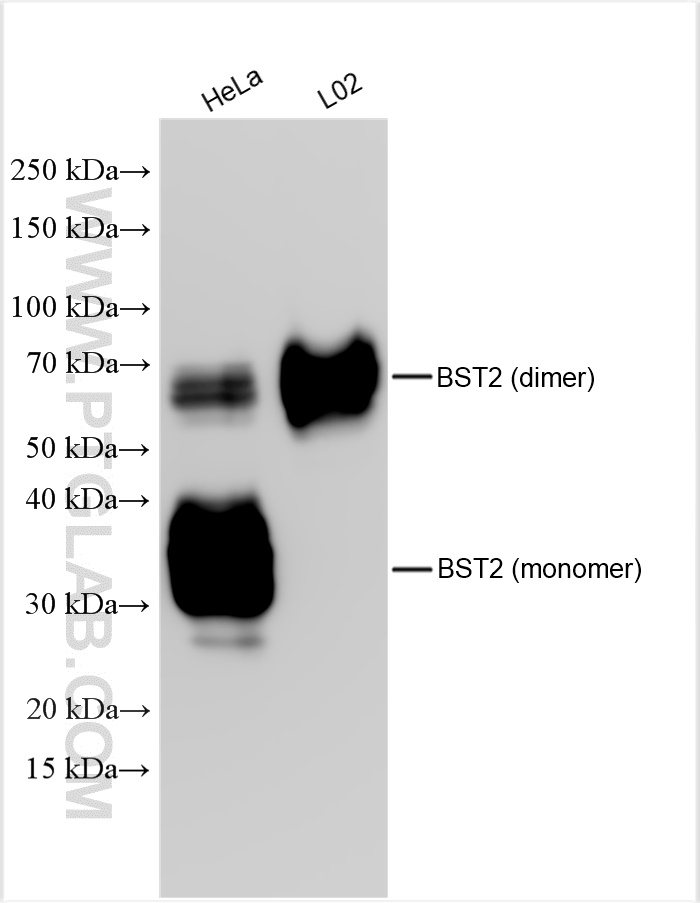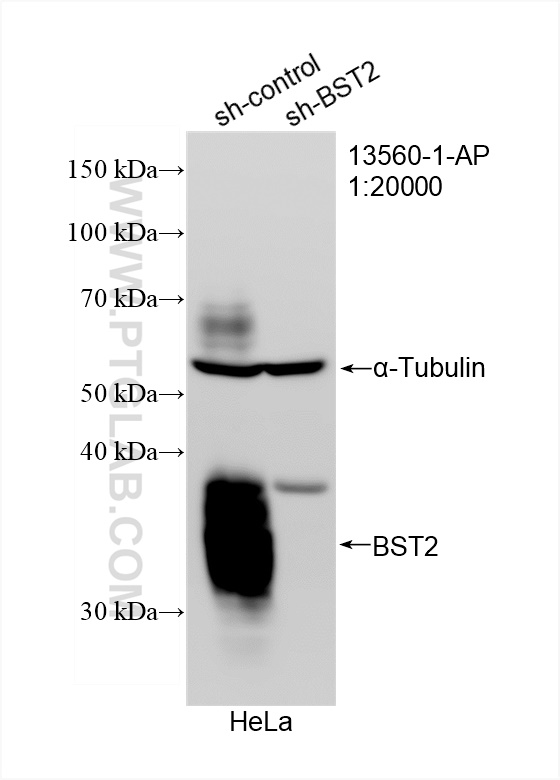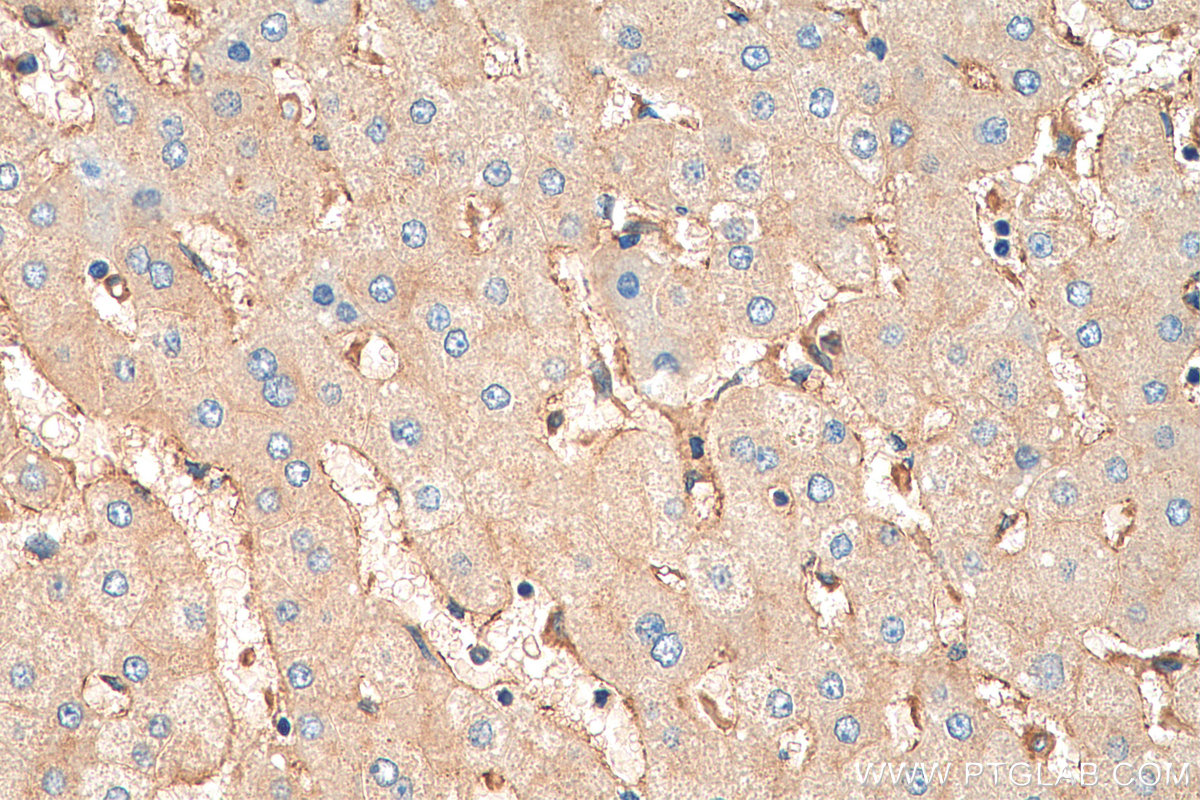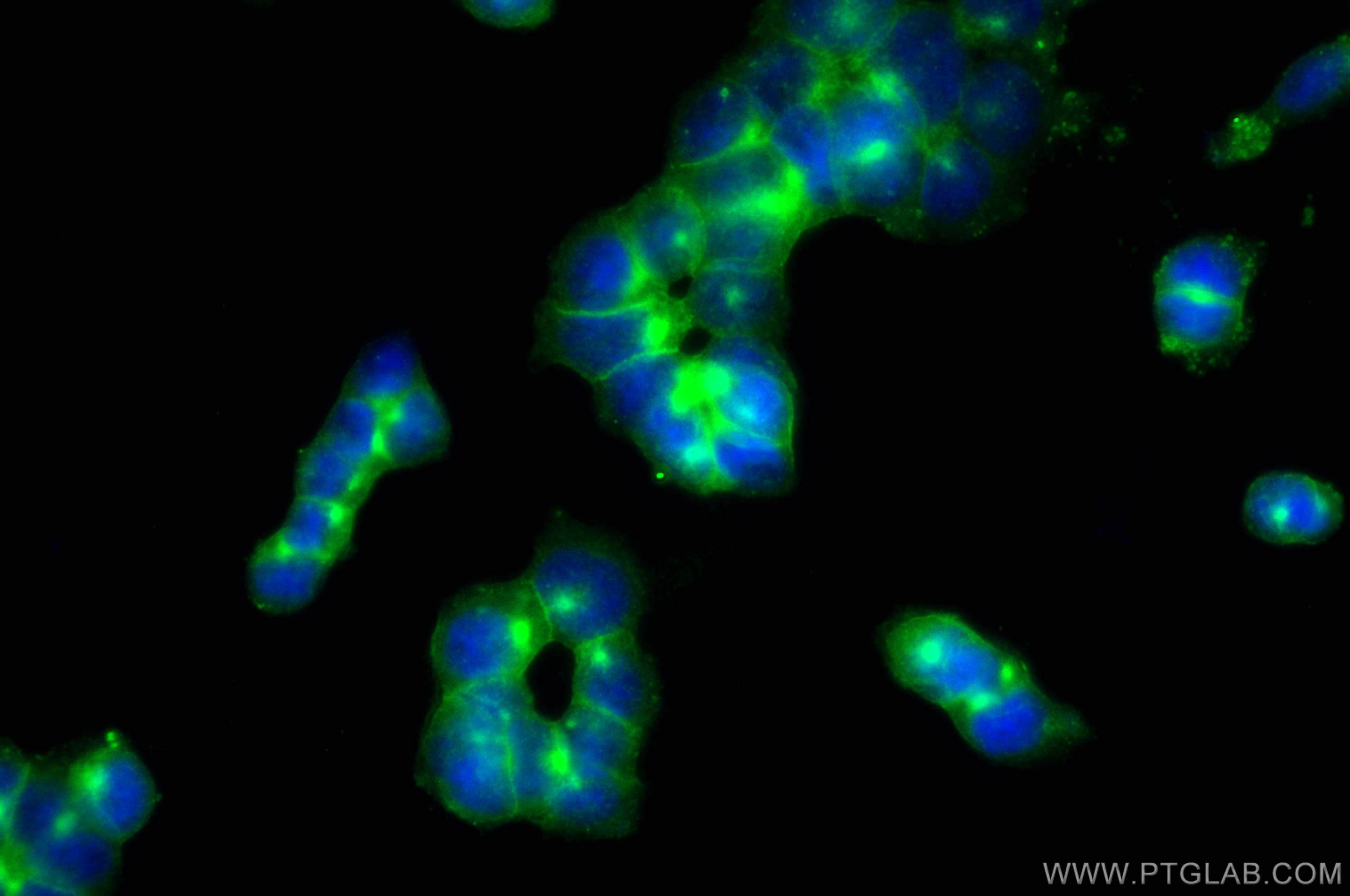验证数据展示
经过测试的应用
| Positive WB detected in | HeLa cells, L02 cells |
| Positive IHC detected in | human liver tissue Note: suggested antigen retrieval with TE buffer pH 9.0; (*) Alternatively, antigen retrieval may be performed with citrate buffer pH 6.0 |
| Positive IF/ICC detected in | NCCIT cells |
推荐稀释比
| 应用 | 推荐稀释比 |
|---|---|
| Western Blot (WB) | WB : 1:2000-1:16000 |
| Immunohistochemistry (IHC) | IHC : 1:50-1:500 |
| Immunofluorescence (IF)/ICC | IF/ICC : 1:50-1:500 |
| It is recommended that this reagent should be titrated in each testing system to obtain optimal results. | |
| Sample-dependent, Check data in validation data gallery. | |
产品信息
13560-1-AP targets BST2 in WB, IHC, IF/ICC, CoIP, ELISA applications and shows reactivity with human samples.
| 经测试应用 | WB, IHC, IF/ICC, ELISA Application Description |
| 文献引用应用 | WB, IHC, IF, CoIP |
| 经测试反应性 | human |
| 文献引用反应性 | human |
| 免疫原 |
CatNo: Ag4430 Product name: Recombinant human BST2 protein Source: e coli.-derived, PGEX-4T Tag: GST Domain: 1-180 aa of BC033873 Sequence: MASTSYDYCRVPMEDGDKRCKLLLGIGILVLLIIVILGVPLIIFTIKANSEACRDGLRAVMECRNVTHLLQQELTEAQKGFQDVEAQAATCNHTVMALMASLDAEKAQGQKKVEELEGEITTLNHKLQDASAEVERLRRENQVLSVRIADKKYYPSSQDSSSAAAPQLLIVLLGLSALLQ 种属同源性预测 |
| 宿主/亚型 | Rabbit / IgG |
| 抗体类别 | Polyclonal |
| 产品类型 | Antibody |
| 全称 | bone marrow stromal cell antigen 2 |
| 别名 | CD317, Tetherin, CD 317, BST-2, BST 2 |
| 计算分子量 | 180 aa, 20 kDa |
| 观测分子量 | 30-36 kDa, 50-70 kDa |
| GenBank蛋白编号 | BC033873 |
| 基因名称 | BST2 |
| Gene ID (NCBI) | 684 |
| RRID | AB_2067220 |
| 偶联类型 | Unconjugated |
| 形式 | Liquid |
| 纯化方式 | Antigen affinity purification |
| UNIPROT ID | Q10589 |
| 储存缓冲液 | PBS with 0.02% sodium azide and 50% glycerol, pH 7.3. |
| 储存条件 | Store at -20°C. Stable for one year after shipment. Aliquoting is unnecessary for -20oC storage. |
背景介绍
BST2, also named as CD317 and Tetherin, belongs to the tetherin family. It may be involved in the sorting of secreted proteins and it is involved in pre-B-cell growth. BST2 is an antiretroviral defense protein, that blocks retrovirus release from the cell surface. Depleted upon HIV-1 infection by viral VPU protein through 20S proteasome degradation. Depleted upon infection by human Kaposi's sarcoma-associated herpesvirus (KSHV) through ubiquitination and subsequent degradation. BST2 may play a role in B-cell activation in rheumatoid arthritis. It is recently identified interferon-induced cellular proteins that restrict infections by retroviruses and filoviruses and of influenza virus and flaviviruses, respectively. BST2 is a plasma membrane protein, tetherin inhibits virion particle release from infected cells. BST2 is effective against retroviruses and flavoviruses whilst IFITMs disrupt influenza and flavivirus infection. Observed MW of BST2 are 30-36 kDa (monomer form) and 50-70 kDa (dimer form) (PMID: 19196977; 21237475; 19737401; 37922253).
实验方案
| Product Specific Protocols | |
|---|---|
| IF protocol for BST2 antibody 13560-1-AP | Download protocol |
| IHC protocol for BST2 antibody 13560-1-AP | Download protocol |
| WB protocol for BST2 antibody 13560-1-AP | Download protocol |
| Standard Protocols | |
|---|---|
| Click here to view our Standard Protocols |
发表文章
| Species | Application | Title |
|---|---|---|
Curr Biol The viral restriction factor tetherin/BST2 tethers cytokinetic midbody remnants to the cell surface.
| ||
J Virol Interferon-inducible Protein Tetherin Inhibits Hepatitis B Virus Virion Secretion.
| ||
J Virol Interferon-induced cell membrane proteins, IFITM3 and tetherin, inhibit vesicular stomatitis virus infection via distinct mechanisms. |





